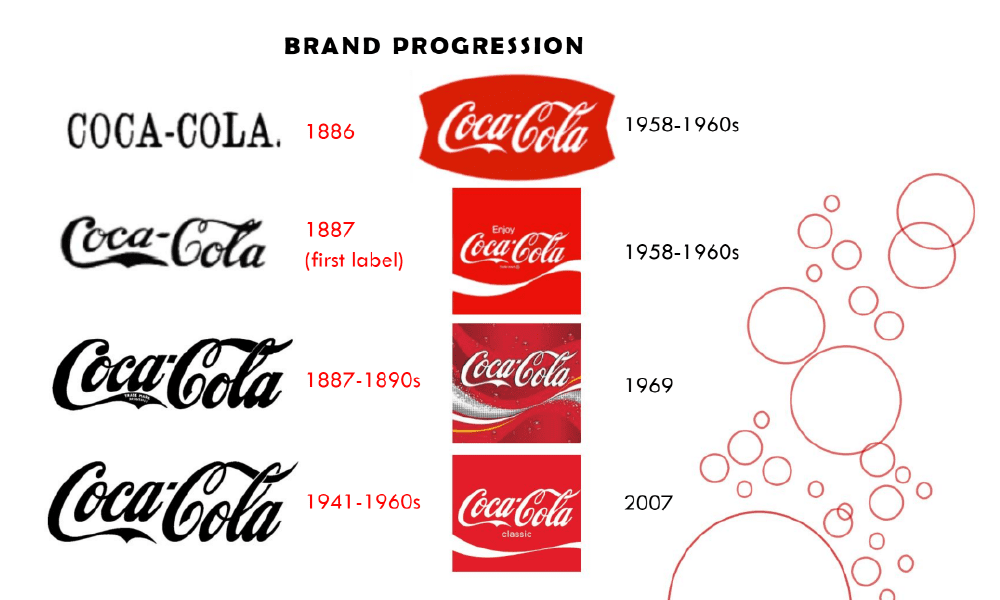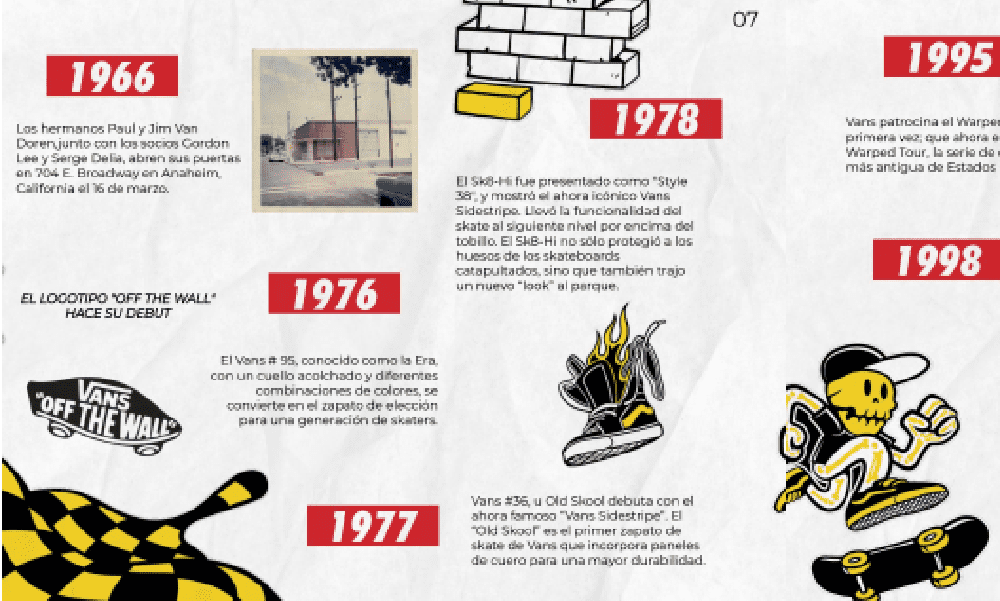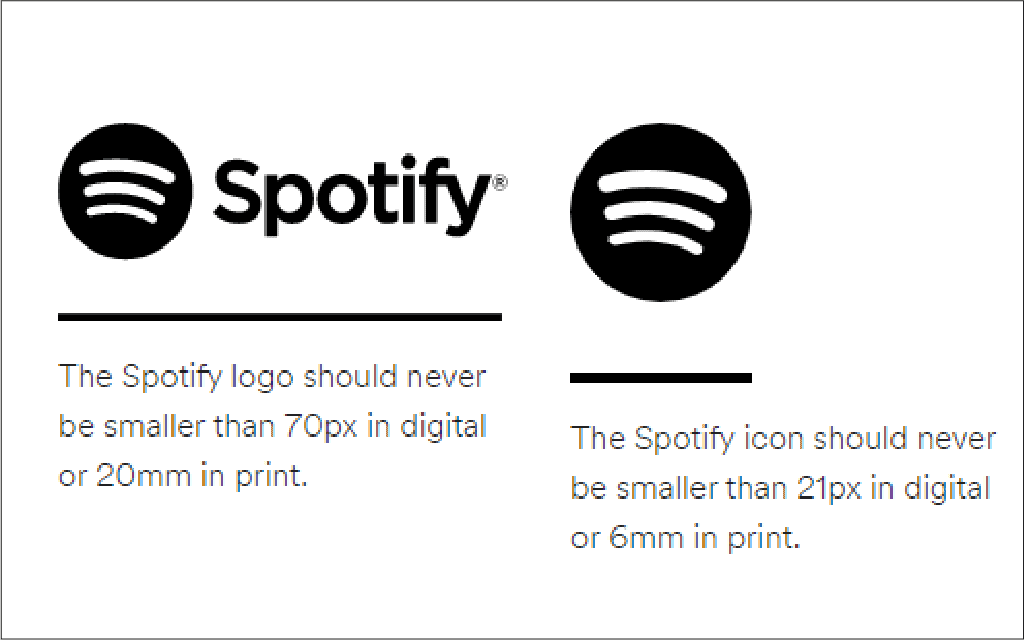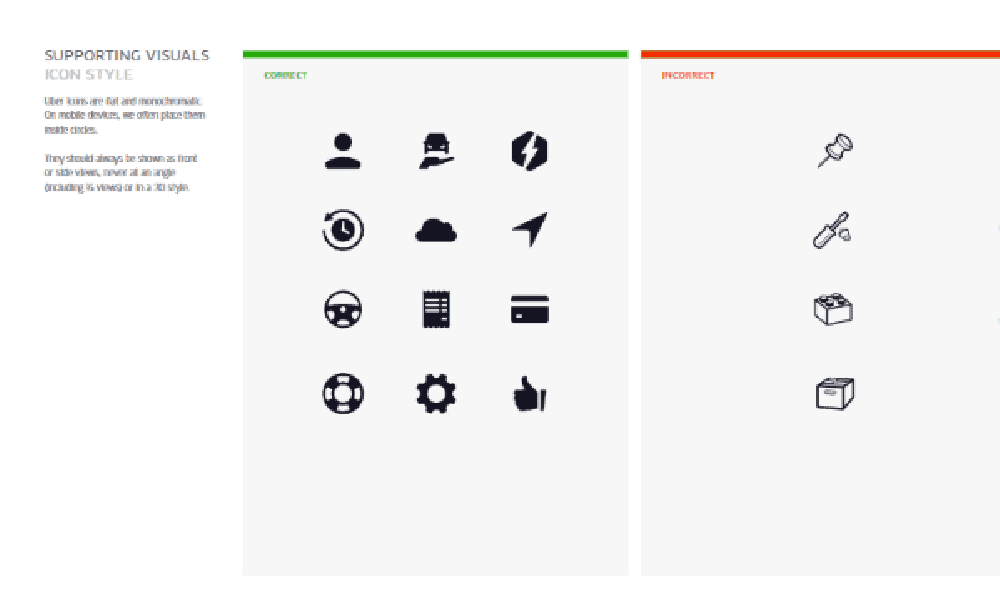Today, a brand must develop awareness (its notoriety), everyone knows it. And if you didn't know it yet, we'll explain. It is very simple. Having a strong brand awareness allows you to generate more leads (prospects) to finally increase your turnover. We told you it was simple 😉
By developing your notoriety, your future customers will have more confidence in you and your skills... They will then be more open to a potential collaboration. The development of notoriety is a key factor in the success of a business! And this includes the brand image and its values. To do this, we present you with a tool that is very simple to use: the Brand Book (or branded book). You're probably thinking, "What's this again?" Don't panic! We explain everything we know about it.
In this article, we reveal how to create this essential document for any brand. But also its advantages, examples of brand books from (very) famous brands, the steps to follow and finally some advice from the Duck team! Are you ready? Let's start at the beginning.
Table of contents
Definition
What is a brand book?
A brand book is a document that includes the visual identity and the universe of your brand. It allows you to gather the fonts used, your logos, your illustrations and all the creations associated with your brand.
benefits
Why make a brand book?
Define your corporate identity
Differentiate yourself from the competition
Create a strong and distinguishable brand
Show your company's DNA and personality
Ensure consistency between all your communication media

The steps from A to Z to create a brand book for your brand!
#1 Introducing your brand
Start by presenting your business, who you are, your history,...
Your vision
Unlike your mission, which is linked to the present, your vision will be a projection into the future. Ask yourself where you want to go in the long term. A company's vision may evolve but it will impact your decisions today. So, how do you see your business in 5, 10, 20 years? Where do you want to be? Be ambitious, consistent and specific. Your vision should be in one sentence. Let's take the example of Amazon and its vision: "to be the most customer-centric company in the world".
Your mission
Share your mission simply and clearly. No fuss. Your mission must be understood at first glance and easily memorized. Your mission is the company's DNA, its reason for being: why does the company exist? Explain only why the brand was created and its current mission.
For example, LinkedIn's mission is simple: "to connect professionals around the world to make them more successful and productive." Simple and direct.
Your values
Your company's values are the benchmarks and principles on which your company is based. They are the direct application of your vision on a daily basis. Remember to include your employees in this process, they are the ambassadors of your brand every day. For example, Nike's values are Authenticity, Inspiration and Courage.
Your story
Tell your story. Where does the brand come from? How did it evolve? Sharing your company's story personifies your business and creates a connection with the reader. This story should be unique and true to life, so that everyone can relate to it.
Your products & services
Present an overview of your offer. Take the time to define your activities, products and/or services. Be as complete as possible and don't hesitate to indicate the Do's and Don'ts!
Your target audience
Who are your customers? Why do they need you? What are their challenges? Also define your targets.
Unlike your mission, which is linked to the present, your vision is a projection into the future. Ask yourself where you want to go in the long term. A company's vision may evolve, but it will impact your decisions today. So, how do you see your business in 5, 10, 20 years' time? What's your destination? Be ambitious, consistent and precise. Your vision should fit into a single sentence. Take Amazon, for example, and its vision: "to be the most customer-centric company in the world".
Share your mission simply and clearly. No fuss. Your mission must be understood at first glance and easily memorized. Your mission is the company's DNA, its reason for being: why does the company exist? Explain only why the brand was created and its current mission.
For example, LinkedIn's mission is simple: "to connect professionals around the world to make them more successful and productive." Simple and direct.
Your company's values are the benchmarks and principles on which it is based. They are the direct application of your vision on a daily basis. Remember to include your employees in this process, as they are the ambassadors of your brand every day. For example, Nike's values are Authenticity, Inspiration and Courage.
Tell your story. Where does the brand come from? How did it evolve? Sharing your company's story personifies your business and creates a connection with the reader. This story should be unique and true to life, so that everyone can relate to it.
Present an overview of your offer. Take the time to define your activities, products and/or services. Be as complete as possible, and don't hesitate to include the Do's and Don'ts!
Who are your customers? Why do they need you? What are their challenges? Also define your targets.
#2 The graphic charter
The graphic charter includes all the elements that constitute the visual identity of your brand. A graphic charter is set up so that all documents follow the same rules and remain faithful to the graphic principles. And this to ensure consistency in all communications and to be easily identifiable by the target.
Colors
Define a few colors that you will stick to in all your communication supports (internal/external, online/offline). Using always the same colors allows to mark the mind of the consumers and to be quickly identifiable. There is no number to respect. You can choose 2 colors as you can choose 10. Most brands select a maximum of 4 colors to keep their visual identity simple. You can of course add color variations, but be sure to indicate the names and references of each color (CMYK for print, RGB and HEX for web) as well as the possible variations in the brand book. At Duckmotion for example, we have 2 main colors and 4 secondary colors. But be careful, there are rules of use for each color. You'll never see a red title on our Insta or website... Our graphic designer, Justin, makes sure that we respect the defined rules 😉
Logo & baseline
The logo is essential in the visual identity of a brand. It is suuuuper important to present the different ways to use it! Otherwise, your logo will not always be respected... The big brands have several logos and variations depending on the context and communication media (flyer, social media, video, ...). That's why you must absolutely put in writing the rules of use of your logo according to each context. Present your logo and its variations. But also, its dimensions and its positioning, the spacing between the elements, etc. Don't hesitate to present the do's and don'ts with concrete examples of mistakes to avoid (Spotify does it very well, discover its brand book at the end of the article). The baseline generally follows the same rules as your logo, but it still requires some clear clarifications.a baseline is a slogan that adds additional information to the customer. It serves as a signature for a brand and often appears at the end of a video or at the bottom of a poster for example. Ask yourself these questions: Should the baseline always accompany the logo? Where should it be positioned in relation to the logo? What size and spacing?
Typography
As with colors, it is important to define the typefaces of your brand. We advise you to limit yourself to two families of typographies. One will be dedicated to titles and the other to texts. For example, at Duckmotion our two typefaces are Avenir & ITC Avant Garde Gothic Pro. For the ITC Avant Garde Gothic Pro typeface, there are 3 variations: Book, Medium, Bold. For the typeface Avenir too: Book, Roman, Black. So we can say that we have a total of 6 different scripts with only two typefaces.
Illustrations & pictorgrams
You must also specify in your brand book the use of elements (if any) such as photos, illustrations, icons and in what context. This may concern photo retouching, how are they edited? What colors should be used for icons? What type of pictogram should be used (thin, thick, filled, etc.)? Where should the logo be inserted? Be as complete as possible and don't hesitate again to indicate the Do's and Don'ts!
Define a few colors that you'll stick to in all your communication media (internal/external, online/offline). There's no set number of colors to choose from. You can choose 2 colors, just as you can choose 10. Most brands select a maximum of 4 colors to keep their visual identity fairly simple. You can of course add color variations, but be sure to indicate the names and references of each color (CMYK for print, RGB and HEX for web) as well as the possible variations in the brand book. At Duckmotion, for example, we have 2 main colors and 4 secondary colors. But be careful, there are rules of use for each color. You'll never see a red title on our Insta or website... Our graphic designer, Justin, makes sure we follow the rules 😉
The logo is an essential part of a brand's visual identity. It's suuuuper important to present the different ways of using it! Otherwise, your logo won't always be respected... The big brands have several logos and variations depending on the context and communication media (flyer, social media, video, etc.). That's why it's essential to set out in writing the rules for using your logo in each context. Present your logo and its variations. But also its dimensions and positioning, the spacing between elements, etc. Don't hesitate to present the do's and don'ts, with concrete examples of mistakes to avoid (Spotify does this very well, see their brand book at the end of the article). The baseline generally follows the same rules as your logo, but still requires a few clear details: a baseline is a slogan that adds extra information for the customer. It serves as a signature for a brand and often appears at the end of a video or at the bottom of a poster, for example. Ask yourself these questions: Should the baseline always accompany the logo? Where should it be positioned in relation to the logo? What size and spacing?
As with colors, it's important to define your brand's typefaces. We recommend limiting yourself to two families of typefaces. One will be dedicated to titles and the other to text. For example, at Duckmotion our two typefaces are Avenir & ITC Avant Garde Gothic Pro. For ITC Avant Garde Gothic Pro, there are 3 variations: Book, Medium, Bold. For Avenir too: Book, Roman, Black. So we can say that we have a total of 6 different scripts with just two typefaces.
You also need to specify in your brand book the use of elements (if any) such as photos, illustrations, icons and in what context. This may concern photo retouching: how are they edited? What colors should be used for icons? What type of pictogram should be used (thin, thick, filled lines, etc.)? Where should the logo be inserted? Be as complete as possible, and don't hesitate to include the Do's and Don'ts!
An animated logo?
Did you know that you can animate your logo?
It's no secret that video attracts more attention than a static image. Animate your logo to stand out from your competitors, stand out from the crowd and give the image of a dynamic and trendy company.
Want to liven up your logo? Contact us !

Need help to establish your graphic charter?
We look forward to working together and discovering your world!
#3 The Editorial Charter
The graphic charter includes all the elements that constitute the visual identity of your brand. A graphic charter is set up so that all documents follow the same rules and remain faithful to the graphic principles. And this to ensure consistency in all communications and to be easily identifiable by the target.
The tone of voice
The tone of voice is in fact the way the company communicates its values and vision to its target. It is the tone of voice used by your brand to address its audience. And there are many tones: serious, friendly, professional, funny, reassuring, etc. You need to adopt a style that matches your brand image, your values but also your audience. I guess you are starting to understand that "consistency" is the key word of this article 🙂 Yes, if you are in the legal field, you will not use the same tone as an event agency for example. Once again, feel free to add the tones you shouldn't go towards. The tone of voice will guide you in writing all your content (emails, social media copy, blog posts, quotes,...) and will also reveal your personality and engage with your community.
Editorial rules
In addition to the tone you want to use when writing, you can specify the keywords you like to use regularly as well as emojis (if you don't use any, specify that!). Should you use short or long sentences? Should you be on first-name or last-name terms with the reader? What is the ideal length of a post on Instagram? What words should be avoided? The more precise and complete you are, the less bad surprises you will have 😉
Tone of voice is the way in which a company communicates its values and vision to its target audience. It refers to the tone your brand uses to address its audience. And there are lots of tones: serious, friendly, professional, funny, reassuring... You need to adopt a style that matches your brand image, your values and your audience. I guess you're beginning to understand that "consistency" is the key word in this article 🙂 And yes, if you're in the legal field, you won't use the same tone as an event agency, for example. Once again, don't hesitate to add the tones you shouldn't go for. The tone of voice will guide you in the writing of all your content (emails, social media copy, blog posts, quotes, etc.) and will also reveal your personality and engage with your community.
In addition to the tone you want to use when writing, you can specify the keywords you like to use regularly, as well as emojis (if you don't use any, say so!). Should I use short or long sentences? Should the reader be on first-name or last-name terms? What's the ideal length of a post on Instagram? What words should be avoided? The more precise and complete you are, the fewer unpleasant surprises you'll have 😉
6 Examples of brand book
We have gathered for you some examples of brand books that you can use as inspiration to create your own, just here.
And here are some examples of brand books from well-known brands: Coca-Cola, Adidas, Vans, Spotify and McDonalds.

Brand book of Coca-Cola
In the brand book of Coca-ColaIn this section, we find the presentation of the brand, the evolution of the logos and their branding guidelines, their audience, their positioning, etc.

Brand book of Adidas
Adidas is all about emotion with photos of athletes and thus captures the reader's attention. They detail their color palette, typography, logos, etc. They also add the Don'ts.

Brand book of Vans
Vans plunges us directly into the universe of the brand with many photos and colors. His brand book is very complete and presents in depth the brand, its history, its values and its charter.

Spotify brand book
The brand book of Spotify is directly accessible on their website. Spotify gives a lot of details about the use of their logo, colors, pictures, sizes, locations, etc.

McDonalds Brand book

Brand book of Uber
3 tips to create your brand book
Your brand book is intended to be distributed as widely as possible. It must therefore be easily understood by everyone. Stay direct, simple and concrete. Avoid making promises, get to the point without detours. The brand book must be useful to your reader and make him want to read it to the end.
Design your document as a communication medium. Use your graphic and editorial guidelines 😉 and make it attractive and pleasant to browse. The brand book must let your brand identity shine through and must be consistent with its content. It will be one of the first documents that your customers and future customers will consult.
It's up to you!
As you can see, a brand book is really a very complete and valuable document for a brand. Of course, you can adapt it a little according to your field and it can evolve over time (keep it updated). When creating your brand book, bring a real added value, be simple, direct & creative! And don't forget, the key word is CO-HERE!
Now that we've shared everything we know, it's up to you! Or contact us, we can't wait to think about your identity and design your brand book together 🙂 .
You may be interested in these articles
-
Corporate branding strategies to know in 2024
27 February 2024 Branding


